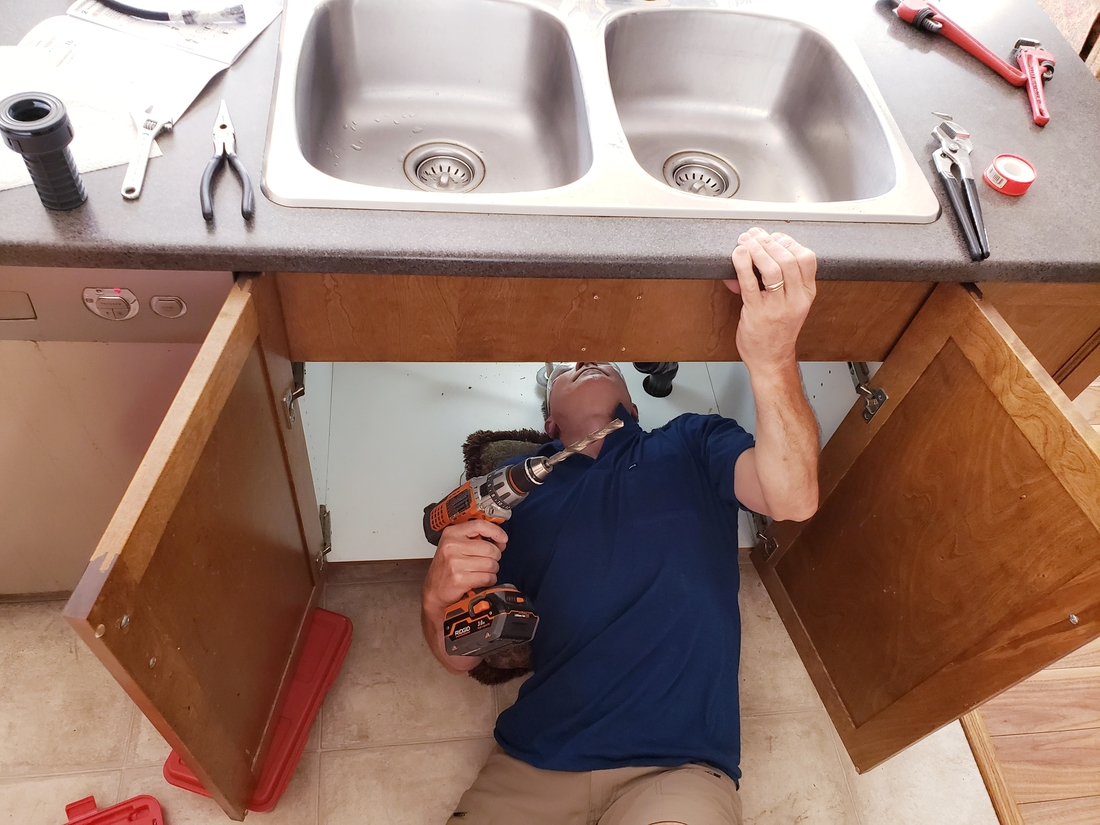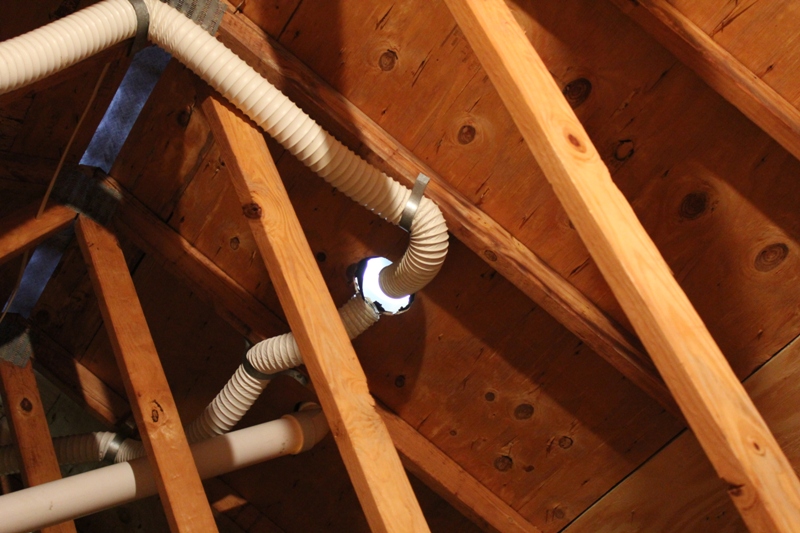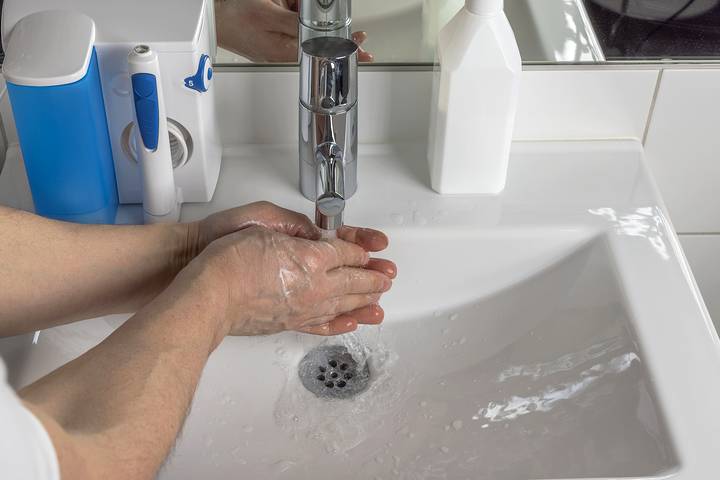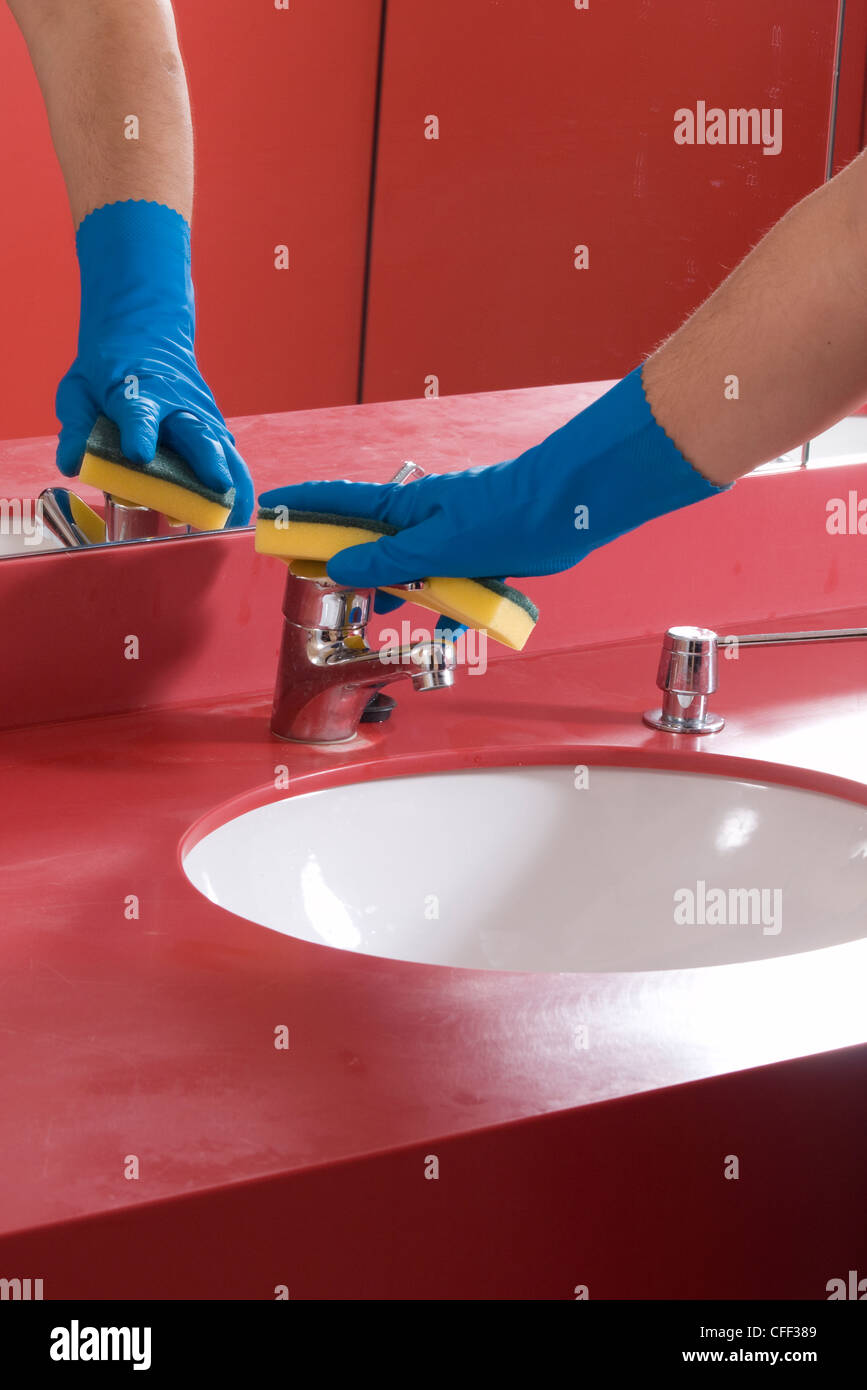When it comes to proper bathroom sink venting, there are a few different options to consider. The most common method is to have a vent pipe installed that connects to the main plumbing stack. This allows air to flow through the pipes and prevent water from being siphoned out of the sink. Another option is to use an air admittance valve, which is a mechanical vent that can be installed under the sink. This allows air to enter the pipes and equalize the pressure, preventing any issues with drainage. Finally, some sinks may have a built-in vent that is connected to the drain. This option is not as common, but can be effective for smaller sinks. Bathroom sink venting options
Installing a bathroom sink vent is not a simple DIY project and should be done by a professional plumber. The process involves cutting into the wall or ceiling to access the main plumbing stack and installing a vent pipe. The size and placement of the vent will depend on the layout and design of your bathroom, so it's important to consult with a professional before beginning any installation. A properly installed vent will ensure proper drainage and help prevent any future issues with your bathroom sink. How to install a bathroom sink vent
One of the most common problems with bathroom sink vents is clogging. This can happen if debris or hair gets trapped in the vent pipe, preventing proper air flow. Another issue is improper installation, which can lead to leaks and reduced efficiency. In some cases, a bathroom sink may have no vent at all, which can cause slow draining and foul odors. It's important to address any issues with your bathroom sink vent as soon as possible to prevent more serious plumbing problems down the line. Common problems with bathroom sink vents
Proper bathroom sink venting is essential for maintaining a healthy and functional plumbing system. Without a vent, air cannot flow through the pipes and water may not drain properly. This can lead to slow draining, clogs, and even sewer gas backups. Additionally, proper venting helps prevent the buildup of harmful bacteria and mold in your pipes. It's important to ensure that your bathroom sink has a vent and that it is installed correctly to avoid any potential issues. Importance of proper bathroom sink venting
If your bathroom sink has no vent, there are a few troubleshooting steps you can take before calling a professional plumber. First, check for any clogs or debris in the sink or drain. You can also try using a plunger to see if that improves drainage. If the issue persists, it's best to call a plumber to assess the situation and determine the best course of action. It's always better to address a potential plumbing problem sooner rather than later. Troubleshooting a bathroom sink with no vent
If you're dealing with a bathroom sink that has no vent, there are a few DIY solutions that may help improve drainage. One option is to install an air admittance valve, which can be purchased at most hardware stores. This mechanical vent can be installed under the sink and will allow air to enter the pipes and equalize the pressure. Another solution is to install a vent stack, which will require more extensive plumbing knowledge and may be best left to the professionals. DIY solutions for a bathroom sink without a vent
When it comes to bathroom sink venting, it's always best to consult with a professional plumber. They have the knowledge and experience to properly assess your plumbing system and determine the best venting solution for your specific bathroom layout. They can also ensure that the vent is installed correctly and meets all building codes and regulations. Investing in professional plumbing services for your bathroom sink venting can save you time, money, and potential headaches in the long run. Professional plumbing services for bathroom sink venting
When it comes to plumbing, it's important to follow building codes and regulations to ensure the safety and functionality of your home. This includes proper bathroom sink venting. Building codes may vary depending on your location, so it's important to consult with a professional plumber who is familiar with local codes and can ensure that your bathroom sink vent is up to standard. Meeting building codes will also ensure that your home passes any inspections if you decide to sell in the future. Understanding building codes for bathroom sink venting
Adding a vent to your bathroom sink can have numerous benefits. It can improve the efficiency of your plumbing system, preventing clogs and slow draining. It can also help prevent the buildup of harmful bacteria and mold. Additionally, a properly installed vent can help eliminate any foul odors in your bathroom. Investing in a bathroom sink vent can improve the overall functionality and health of your plumbing system. Benefits of adding a vent to your bathroom sink
If you're unsure whether your bathroom sink has a vent, there are a few ways to check. The most obvious sign is if you can see a visible vent pipe coming out of your bathroom wall or ceiling. Another way to tell is if your sink drains quickly and without any issues. If you notice slow draining or foul odors, it's possible that your bathroom sink does not have a vent and may require professional plumbing services to address the issue. How to tell if your bathroom sink has a vent
The Importance of Proper Ventilation for Your Bathroom Sink

Understanding the Role of Ventilation in House Design
 When it comes to designing a house, ventilation is often overlooked or considered a minor aspect. However, proper ventilation is crucial for maintaining a healthy and comfortable living environment. This is especially true for the bathroom, where a lack of ventilation can lead to various problems, such as excessive humidity, unpleasant odors, and even mold growth.
When it comes to designing a house, ventilation is often overlooked or considered a minor aspect. However, proper ventilation is crucial for maintaining a healthy and comfortable living environment. This is especially true for the bathroom, where a lack of ventilation can lead to various problems, such as excessive humidity, unpleasant odors, and even mold growth.
The Role of Vents in the Bathroom Sink Area
 One of the most common issues in bathrooms is a lack of ventilation in the sink area. Most homeowners may not realize it, but the sink area also needs proper ventilation, just like the rest of the bathroom. Without it, the buildup of moisture and odors can cause health hazards, as well as damage to the sink and surrounding materials.
Moisture control
is one of the primary functions of a vent in the sink area. When we use the sink, water splashes and accumulates on the surface, as well as in the drain. Without proper ventilation, this moisture can linger and create ideal conditions for mold and mildew growth. Not only is this unsightly, but it can also lead to health issues, especially for those with respiratory problems.
One of the most common issues in bathrooms is a lack of ventilation in the sink area. Most homeowners may not realize it, but the sink area also needs proper ventilation, just like the rest of the bathroom. Without it, the buildup of moisture and odors can cause health hazards, as well as damage to the sink and surrounding materials.
Moisture control
is one of the primary functions of a vent in the sink area. When we use the sink, water splashes and accumulates on the surface, as well as in the drain. Without proper ventilation, this moisture can linger and create ideal conditions for mold and mildew growth. Not only is this unsightly, but it can also lead to health issues, especially for those with respiratory problems.
The Benefits of Installing a Vent in Your Bathroom Sink
In Conclusion
 Incorporating proper ventilation in your bathroom sink area is essential for maintaining a comfortable and healthy living environment. Not only does it prevent potential health hazards, but it also contributes to a more energy-efficient house design. So, if you are experiencing issues with excess moisture and odors in your bathroom sink area, consider installing a vent to reap the benefits it brings.
Incorporating proper ventilation in your bathroom sink area is essential for maintaining a comfortable and healthy living environment. Not only does it prevent potential health hazards, but it also contributes to a more energy-efficient house design. So, if you are experiencing issues with excess moisture and odors in your bathroom sink area, consider installing a vent to reap the benefits it brings.


















/sink-vent-installing-an-auto-vent-2718828-05-ca0dcb2915be457b9693ccd2655e6c21.jpg)

























:max_bytes(150000):strip_icc()/what-is-under-the-bathroom-sink-3973574-03-c2c800c743054899aca9bdcc0535db34.jpg)
















































